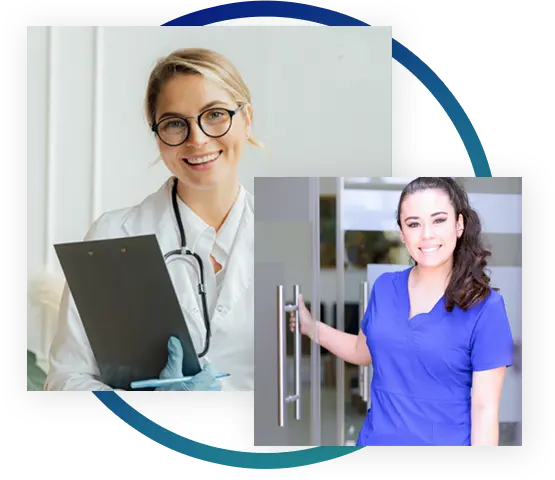
 By Deval (Reshma) Paranjpe, MD, MBA, FACS
By Deval (Reshma) Paranjpe, MD, MBA, FACS
The siege has lasted one year now. One year since the pandemic caused our lives to change in ways we’d never imagined. One year since everything shut down and all manner of unthinkable things ensued. One year since we started to see both the best and the worst of human nature brought out by crisis on a daily basis, both in the news and in our everyday life.
We may be done with the pandemic, but the pandemic is not done with us. Some people are living in a strange reality, believing that the pandemic is over for them (and for the rest of the world) because they’ve been vaccinated. The truth is far more nuanced than that. Just because we’ve been vaccinated as health care workers doesn’t mean that we are immune to all the quickly evolving mutated strains. Vaccination doesn’t mean we can’t get COVID-19; we can. It just means we are far less likely to end up in the hospital or die from it if we do contract it. Vaccination doesn’t mean that we can’t spread it to others, vaccinated or not. And no one knows how long the immunity from the vaccinations we have received will last. Three months? Six months? A year? We all need to remember that vaccination, while sorely needed and desirable, is not a get out of jail free card. COVID-19 and its variants are causing a surge in Italy, and we have always been about four to six weeks behind. We are due for another surge mid-April.
If we as physicians understand this and care about our own behavior, our patients will be more likely to be more mindful about theirs. I’m on multiple Facebook physician groups, and physicians are posting questions such as, “Can we have a vaccinated dinner party now?” and “Vaccinated physician, vaccinated patient – can we take off our masks now?” I remember during the HIV epidemic when my childhood orthodontist started wearing gloves for the first time, and how jarring it was as a patient. Today, I can’t imagine a world where any professional would think of examining someone’s oropharynx without gloves.
I’m an ophthalmologist, and I can tell you that pre-pandemic, I’d be sick with upper respiratory tract (URI) symptoms or sinusitis at least once a month. This makes sense, because ophthalmologists examine patients over the distance of only a few inches between our faces, and patients seldom cease to talk once they are that close in the slit lamp.
Ophthalmology does not lend itself to telemedicine because of the current technical limitations. Pre-vaccination, I took every precaution I could think of, but had quietly resigned myself to the eventuality that I would at some point contract COVID from a patient contact. And also, that I would be exposed to a considerable viral load, because of the proximity of that contact. I had read last spring about ophthalmologists and ENT surgeons as well as the many anesthesiologists and ICU physicians – all presumably exposed to significant viral loads – who were ICU patients in New York City and Italy. I started decluttering my house. I was thankful that I’d made a will. I asked an attorney friend to walk my family through the wreckage if I ended up in the ICU or worse.
Thankfully, that hasn’t happened so far. The reality has been something I had not expected. I’ve been seeing patients in person continuously since the spring shutdown lifted, and I have not had a cold or sinusitis even once. This is nothing short of miraculous. Influenza seems to have taken a vacation this year. I credit this to policies set in place due to COVID:
1. Patients are screened for illness. If you are having URI symptoms or have had recent COVID contacts, you are asked to reschedule if it’s not an emergency. This policy will not be possible for many specialties, but it certainly cuts down on potential spread in the waiting room and the exam room.
2. Patients are masked, and so am I. I offer to tape up their ill-fitting masks for a better seal; in fact, I have to in order to get a decent exam without their breath fogging up the slit lamp view. This cuts down the amount of aerosol and droplet exposure faced by the clinician (and indeed, by the patient).
3. I have a larger than before clear divider between myself and the patient at the slit lamp that also cuts down exposure.
4. I wear a well-fitting N-95 or equivalent mask that I keep on throughout clinic.
5. I ask the patient not to speak once in the slit lamp and to save their questions for after the slit lamp exam. I pull away if they forget and start speaking anyway. (I stay quiet at the slit lamp, too.)
6. I’ve been strict about precautions (gloves, mask, handwashing) whether or not at work.
I remember in pre-pandemic days asking the technician of a senior ophthalmologist I once worked with why he would always wear a mask at the slit lamp. “Well, ever since that time a few years ago when he ended up in the ICU with meningitis that he contracted from a sick patient, he always wears a mask at the slit lamp.”
He found out the hard way, but he was onto something. Practical risk reduction made sense for him and I think it does for the rest of us, too, going forward. Speaking with colleagues across the country, most if not all of the office staff who have contracted COVID have done so from family or community contacts and not at work where strict precautions are in place.
What workplace precautions have you enacted or seen this year that you would like to continue once the pandemic has abated? What innovations or silver linings for the future of medicine have you seen?
We will emerge changed, but hopefully for the better. Hopefully, the changes we make now will decrease the pain of future pandemics.
I think we need a design of a clear N-95 mask that allows doctors and patients to see each other’s faces, read each other’s lips, and connect on a human level while still providing protection.
Please continue to stay safe, everyone.

